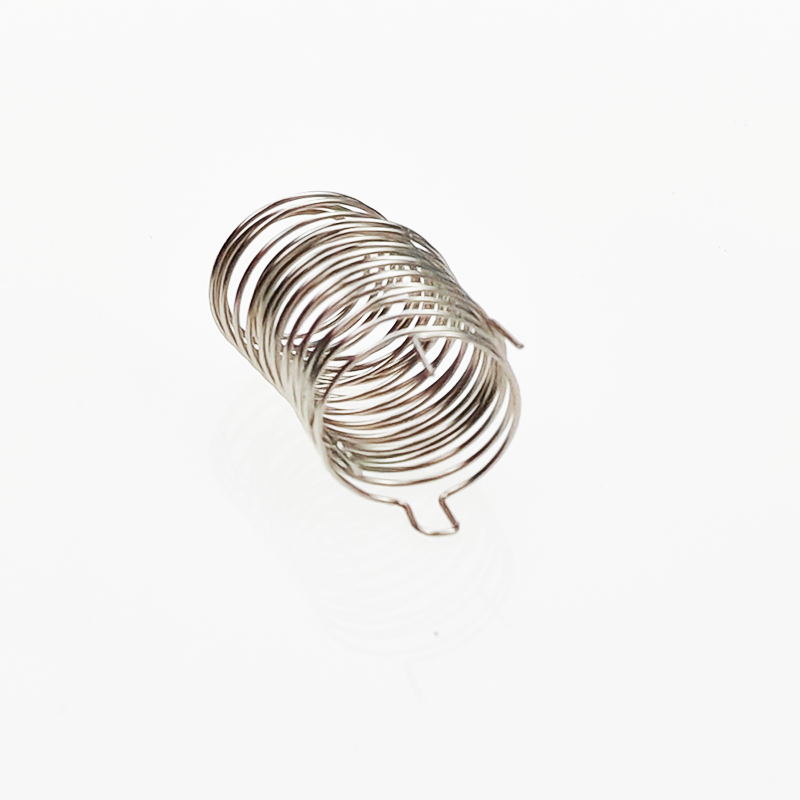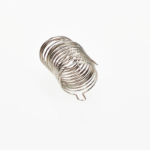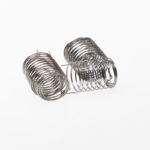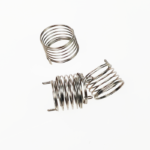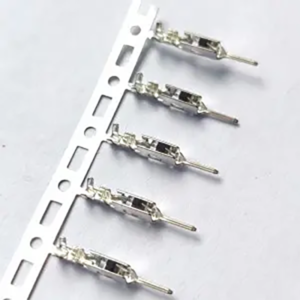Overview:
Wire-formed stainless steel coil springs are high-precision components produced through a specialized wire forming process. This process begins with coiled wire, which is meticulously straightened before undergoing further fabrication. Depending on the complexity and specific requirements of the product, a range of machinery is utilized, from manual tools to sophisticated CNC machines. Our wire forms, which include springs, clips, and hooks, can be manufactured in a diverse array of shapes and sizes to fulfill unique application needs. We provide OEM and custom solutions, allowing us to customize our wire-formed stainless steel coil springs to your precise specifications, ensuring exceptional quality and dependable performance for your applications.

Features:
| Attribute | Details |
| Place of Origin | Xiamen, China |
| Material | Stainless Steel |
| Product Name | Contact Spring |
| Color | Customized Color |
| Size | Customized Size |
| Applications | Automotive, Electronics, and other industries |
| Minimum Order Quantity (MOQ) | According to your requirements |
| OEM Services | Offered |
| Delivery Time | 7-25 Working Days |
| Quality | High-Quality |
| Shipping Terms | By Sea, Express |
Manufacturing Process:
- Design Phase: The manufacturing process initiates with the design of the spring, tailored to meet customer specifications or specific application needs. This phase involves defining critical parameters such as size, shape, load capacity, and material grade. Advanced Computer-Aided Design (CAD) software is typically employed to produce accurate and functional designs.
- Material Selection: The selection of stainless steel wire is crucial and is based on the desired mechanical properties, including strength, corrosion resistance, and fatigue resistance. Common grades of stainless steel used for coil springs include 302, 304, and 316, each chosen for its specific characteristics.
- Wire Cutting: The stainless steel wire is cut to the precise length dictated by the spring’s design specifications. The diameter of the wire is also carefully selected to ensure optimal performance of the finished spring.
- Wire Forming: Utilizing specialized machinery, such as CNC machines or manual wire forming tools, the wire is shaped into the desired configuration. The forming process may involve techniques such as compression, tension, or torsion, depending on the type of spring being manufactured (e.g., coil springs, torsion springs, or compression springs).
- Heat Treatment: To enhance the mechanical properties of the spring, it undergoes a heat treatment process. This may include tempering or stress relieving, which significantly improves the spring’s strength, flexibility, and resistance to fatigue.
- Surface Treatment: To safeguard the coil springs against corrosion and enhance their performance, various surface treatments may be applied. These treatments can include passivation, plating (such as nickel or zinc), or powder coating.
- Assembly and Quality Assurance: If the spring is part of a larger assembly, it will be integrated into its final configuration. Each spring undergoes stringent quality control measures to ensure it meets the necessary specifications for load capacity, durability, and dimensional accuracy.
- Packaging and Shipping: Once the springs have passed all inspections, they are meticulously packaged and prepared for shipment according to customer specifications, ensuring safe delivery.
Surface Treatment Options:
- Cleaning: The wire springs undergo a comprehensive cleaning process to eliminate any contaminants, such as dirt, oils, or impurities, that could compromise the surface finish. This critical step ensures optimal adhesion for any subsequent coatings.
- Passivation: This chemical treatment enhances the corrosion resistance of stainless steel by effectively removing free iron from the surface and creating a protective oxide layer. This process is essential for prolonging the lifespan of the springs in various environments.
- Plating: To meet specific application requirements, springs may be subjected to various plating techniques, including zinc plating, nickel plating, or chrome plating. These processes not only improve corrosion resistance and durability but also provide the desired aesthetic finish.
- Heat Treatment: Springs may undergo heat treatment processes, such as tempering or stress relieving, to enhance their mechanical properties. This treatment increases strength, improves elasticity, and alleviates internal stresses within the material, ensuring optimal performance in their intended applications.
Factory Overview:
Our manufacturing facility is equipped with a comprehensive array of advanced machinery and technology to ensure exceptional production quality. We operate 25 punch presses, with capacities ranging from 25 tons to 300 tons, complemented by precision wire Electrical Discharge Machining (EDM) machines, grinding tools, welding and polishing equipment, and ultrasonic cleaning systems.
In addition to our core manufacturing capabilities, we offer a wide range of metal plating services aimed at enhancing the durability, aesthetics, and functionality of our stamped metal products. Our plating options include electroplating, zinc plating, nickel plating, chrome plating, and anodizing. Our state-of-the-art plating facilities guarantee consistent finishes, outstanding corrosion resistance, and adherence to industry standards.
By integrating automated production lines with cutting-edge machinery, rigorous quality control measures, and superior plating capabilities, we are dedicated to providing metal stamping products that meet the highest standards of quality and performance.


